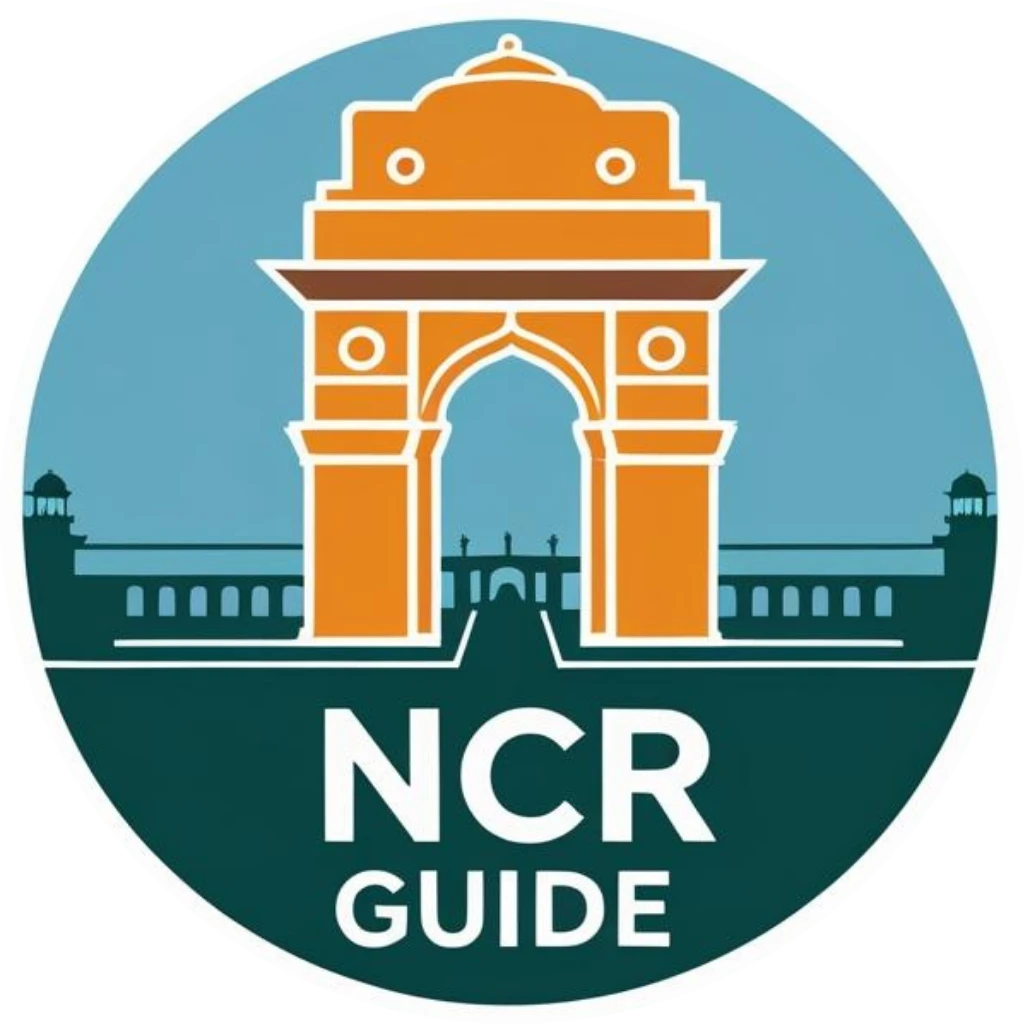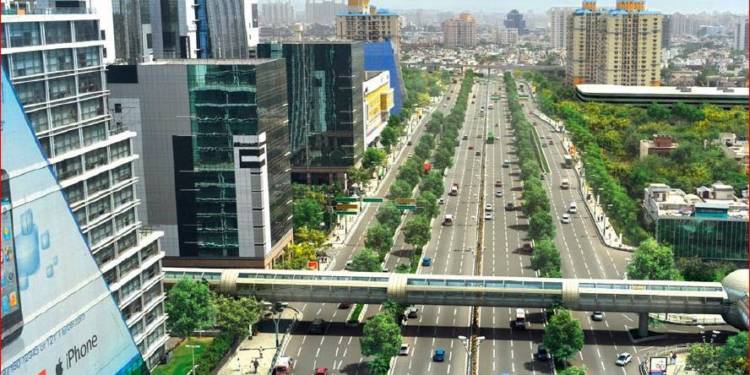Table of Contents
Exploring Delhi NCR: A Comprehensive Guide to the Metro Route Map
Delhi NCR, short for the National Capital Region, is one of the most populous and vibrant urban agglomerations in India. The efficient and expansive Delhi Metro system is a lifeline for millions of commuters, offering a quick and convenient mode of transportation across the region. In this blog, we’ll take you on a virtual journey through the Delhi NCR metro route map, exploring the various lines, key stations, and the connectivity it provides to the city’s major landmarks and attractions.
Overview of Delhi NCR Metro
The Delhi Metro, often referred to as the lifeline of Delhi NCR, comprises several lines that connect different parts of the region. Each line features distinct color-coding, making it easy for passengers to navigate through the network. Let’s delve into the specifics of each line:
- Red Line (Line 1): The Red Line, the first to be operational, spans from Rithala in Delhi to Shaheed Sthal in Ghaziabad. It covers prominent stations like Kashmere Gate, Chandni Chowk, and New Delhi Railway Station.
- Yellow Line (Line 2): This line connects Samaypur Badli in Delhi to HUDA City Centre in Gurugram. It’s known for iconic stations such as Rajiv Chowk (Connaught Place) and Central Secretariat (near India Gate).
- Blue Line (Line 3): Extending from Dwarka Sector 21 to Noida Electronic City, the Blue Line covers significant areas in both Delhi and Noida, making it a crucial link.
- Green Line (Line 5): The Green Line runs from Inderlok in Delhi to Mundka and Brigadier Hoshiar Singh in Bahadurgarh. It facilitates easy connectivity to the western parts of Delhi and Haryana.
- Violet Line (Line 6): Starting from Kashmere Gate, the Violet Line extends to Raja Nahar Singh in Ballabhgarh. It’s vital for commuters traveling to Faridabad.
- Magenta Line (Line 8): This line connects Janakpuri West in Delhi to Botanical Garden in Noida, enhancing metro connectivity in the southwestern and southeastern sectors.
- Pink Line (Line 7): The Pink Line spans from Majlis Park in Delhi to Shiv Vihar. It offers accessibility to areas like Mayur Vihar, Lajpat Nagar, and Sarojini Nagar.
- Aqua Line (Noida-Greater Noida Metro): While not directly a part of Delhi Metro, the Aqua Line serves as an extension and connects Noida and Greater Noida, promoting smoother mobility in the NCR.
Exploring Key Stations and Landmarks
Now, let’s explore some of the key stations and the prominent landmarks accessible via the Delhi NCR metro network:
- Connaught Place (Rajiv Chowk): Located on the Yellow and Blue Lines, Rajiv Chowk is a central hub and offers access to Connaught Place, the heart of Delhi, known for its shopping, dining, and cultural attractions.
- India Gate (Central Secretariat): These stations on the Yellow Line provide easy access to India Gate, a symbol of national pride, and the sprawling greens of Lutyens’ Delhi.
- Akshardham Temple (Akshardham Metro Station): Situated on the Blue Line, the Akshardham Metro Station takes you to the breathtaking Akshardham Temple, renowned for its grandeur and spirituality.
- Qutub Minar (Qutub Minar Metro Station): On the Yellow Line, this station connects you to the historic Qutub Minar, a UNESCO World Heritage Site and architectural marvel.
- Lotus Temple (Nehru Place): The Violet Line’s Nehru Place station is your gateway to the serene Lotus Temple, an architectural masterpiece and a center for meditation.
- Dilli Haat (INA): This handicrafts and culinary haven in South Delhi is easily accessible via the Delhi Metro’s Yellow and Pink Lines at INA station.
- Gurugram Cyber Hub (Sikandarpur): The Yellow Line’s Sikandarpur station opens the door to Cyber Hub, a food and entertainment paradise in Gurugram.
- Noida Sector 18: The Blue Line takes you to Noida Sector 18, a bustling commercial and entertainment center.
Expansions and Upcoming Projects
The Delhi Metro network is continually expanding, with future projects aimed at enhancing connectivity within Delhi NCR. Some of the notable expansions and upcoming lines include:
- Silver Line (Aerocity to Tughlakabad): This upcoming line will enhance connectivity between the Airport and South Delhi.
- Orange Line (Noida Sector 142 to Botanical Garden): A part of Phase IV, this line will further connect Noida and Greater Noida.
- Grey Line (Dwarka ECC to Najafgarh): The Grey Line is set to improve metro connectivity in the southwestern region of Delhi.
With these expansion plans, the Delhi NCR metro network is set to become even more comprehensive and commuter-friendly.
Conclusion
The Delhi NCR metro route map isn’t just about trains; it’s a map of convenience, accessibility, and connectivity. Whether you’re a daily commuter or a traveler exploring the city, the Delhi Metro ensures a smooth and efficient journey, with every station offering a unique gateway to the rich tapestry of Delhi NCR. As the network continues to expand, it promises a brighter and more connected future for the region. So, hop on the metro and embark on a journey through the heart of Delhi NCR.
This blog provides a brief overview of the Delhi NCR metro route map, the key lines, stations, and landmarks. For detailed information, be sure to explore the official Delhi Metro website or visit the metro stations for route maps, fare details, and any updates on expansions and upcoming projects.
Discover the Colors of Delhi NCR Through the Metro Network
The Delhi NCR metro route map is your passport to adventure, allowing you to traverse the dynamic landscapes of this vast region. From historical sites to contemporary hubs, the metro network takes you on a captivating journey through Delhi NCR’s many shades.
FAQS
1. What is the total length of the Delhi NCR metro network?
The Delhi NCR metro network currently spans over 390 kilometers across various lines, with further expansions in the pipeline.
2. Are there any special facilities for differently-abled passengers?
Yes, Delhi Metro is committed to providing accessibility to differently-abled passengers. Most stations are equipped with facilities like ramps, elevators, and designated areas within trains for wheelchair users.
3. How can I plan my metro journey, including fares and route details?
The Delhi Metro offers an official website and smartphone app, providing comprehensive information on fares, routes, station details, and updates on the metro system.
4. Can I use a common metro card for travel across different lines?
Yes, the Delhi Metro offers a common mobility card that allows seamless travel across different lines without needing separate cards for each.
5. What is the future expansion plan for the Delhi NCR metro network?
The Delhi Metro is constantly expanding. Future projects include the Silver Line, Orange Line, Grey Line, and several other extensions to increase connectivity within the region.
6. Are there women-only coaches in the Delhi Metro?
Yes, women-only coaches are available on every Delhi Metro train. They are marked with pink signs and offer women a more secure and comfortable journey.
7. Can I use a metro card to travel on the Delhi NCR metro?
Yes, the Delhi Metro offers smart cards that can be recharged for hassle-free travel on all lines within the network.
8. Are there any discounts or concessions available for students and senior citizens?
The Delhi Metro provides concessions for students and senior citizens. Passengers are encouraged to check the official website for specific eligibility and application details.
9. How is the Delhi NCR metro contributing to environmental sustainability?
The Delhi Metro is one of the greenest metro systems globally. It has implemented eco-friendly practices, including energy-efficient trains and stations, solar power generation, and rainwater harvesting.
10. Can I use the metro to reach popular tourist attractions in Delhi NCR?
Absolutely! The Delhi Metro connects you to major tourist attractions such as India Gate, Qutub Minar, Lotus Temple, Akshardham Temple, and many more. It’s a convenient and economical way to explore the region.

